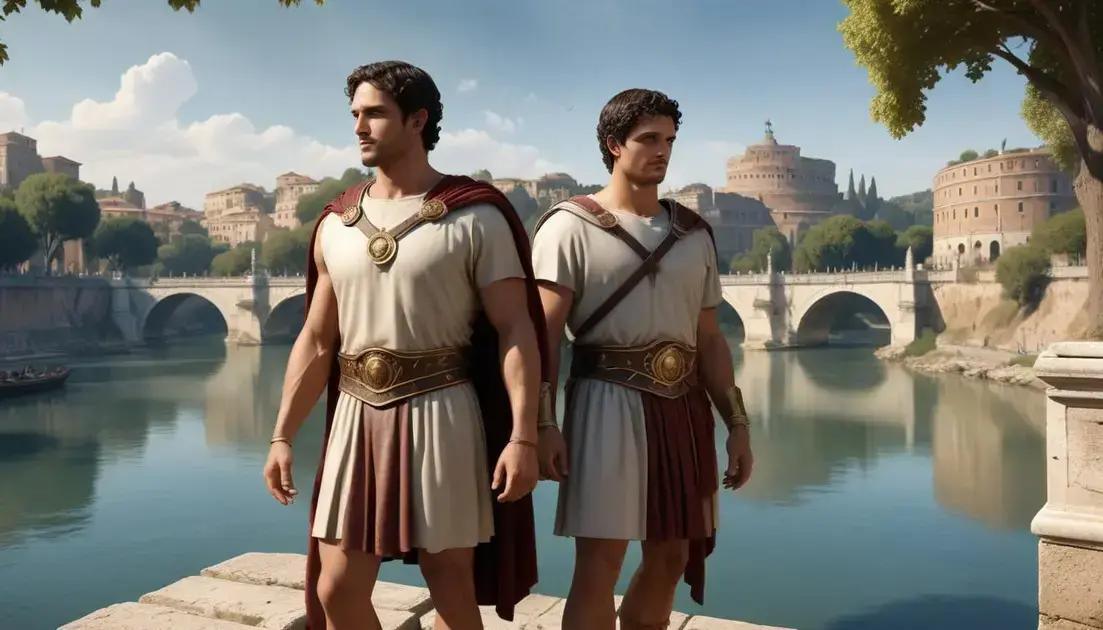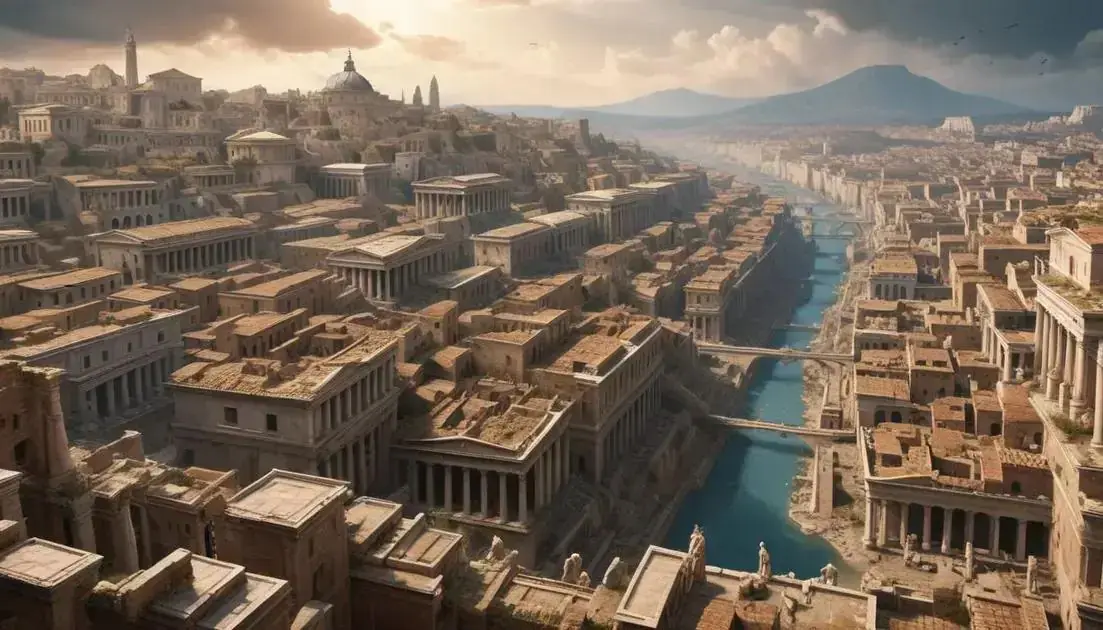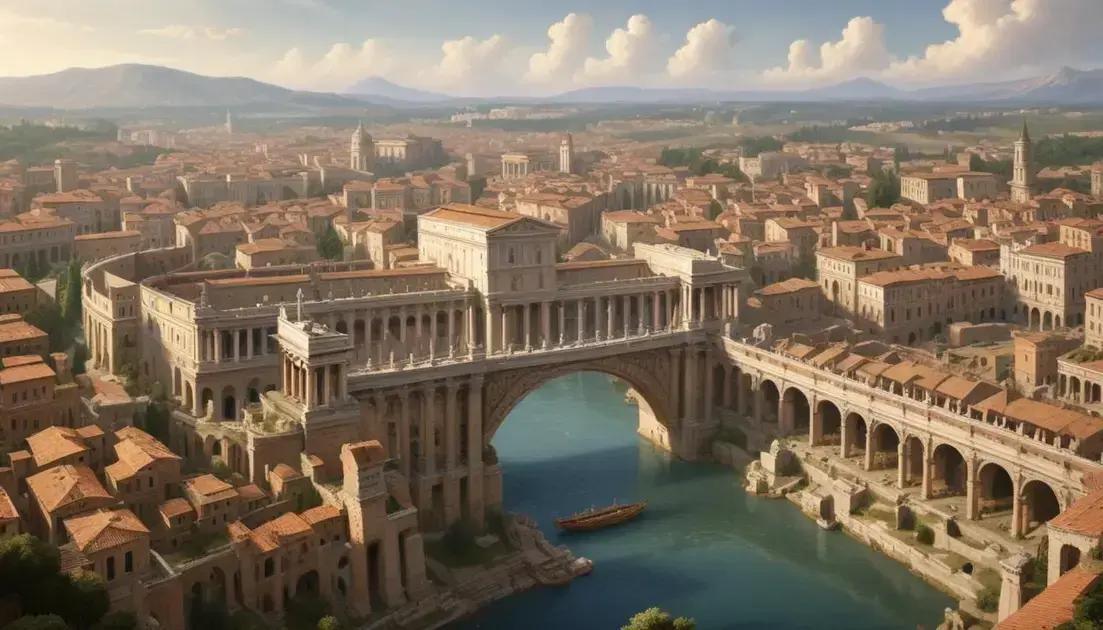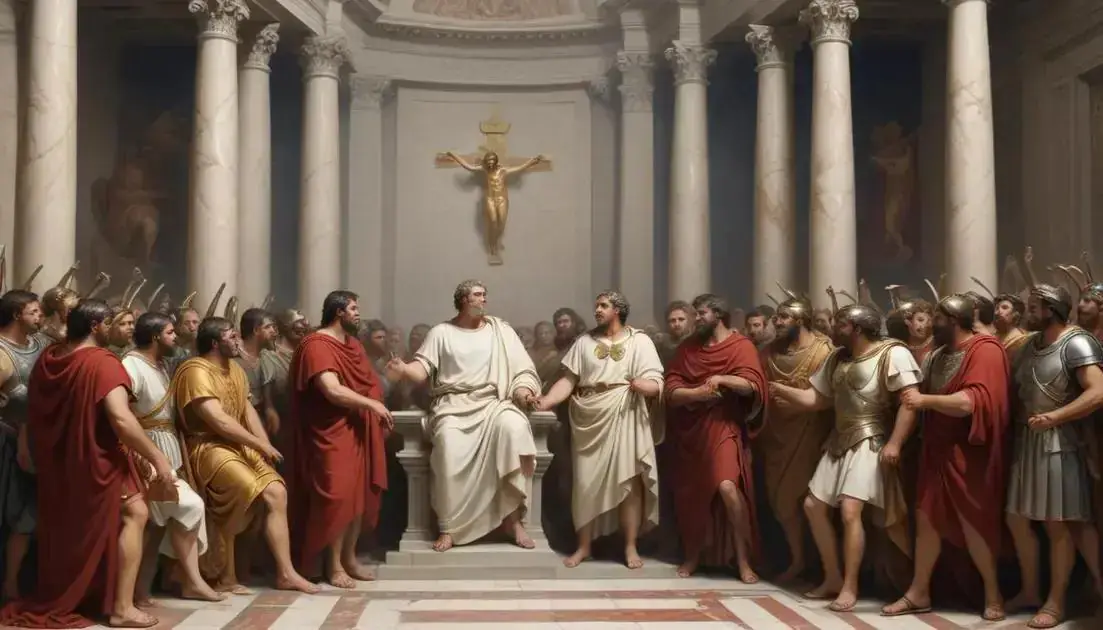
Foundation of Rome: The Legend and the Beginning of an Empire
The Roman Empire has left a profound legacy on modern society, influencing law, architecture, and culture. Concepts like citizenship and justice, born from Roman traditions, shape contemporary legal systems. Architecturally, Roman designs inspire modern buildings, while Roman themes continue to influence literature and celebrations worldwide. Exploring this legacy reveals how the achievements and values of ancient Rome remain relevant in today’s world.
Foundation of Rome stands as a powerful narrative in ancient history, igniting the imagination of many. After all, how did two twins transform into the founders of one of the most formidable empires the world has ever seen?
The Legend of Rômulo and Remo
The legend of Rômulo and Remo is a fascinating story that many people know. These twin brothers are said to have been abandoned as babies. Left near the Tiber River, they faced many dangers but managed to survive. A she-wolf found them and took care of them, nurturing them until they grew. Can you imagine how their journey began?
How Rômulo and Remo Became Founders
As they grew older, Rômulo and Remo longed to know their roots. When they discovered their true identity, they decided to create a city. They had a passionate disagreement about where to build it. In a twist of fate, Rômulo ended up taking charge.
The Birth of Rome
On April 21, 753 BC, Rômulo founded the city of Rome. He began by marking the boundaries of the city with a plow. This act symbolized him claiming the land for the new settlement. It’s a powerful moment in history that led to the rise of a great empire.
Significance of the Legend
This story is more than just a tale. It symbolizes bravery, leadership, and the strong ties of family. Rômulo and Remo represent the struggles and triumphs that shaped Rome. Their legend continues to inspire people today.
Many celebrate this story, and it has become part of Rome’s identity. Festivals and events often highlight this legendary tale. People from all over come to learn about these twins and their impact on the world.
The Significance of Rome’s Foundation
The foundation of Rome is an important part of history. It marks the start of a great civilization. This event shaped the culture and politics that followed. Many believe Rome grew from a small village into a vast empire. This change didn’t happen overnight; it took a lot of time and effort.
Why It Matters
Understanding Rome’s foundation helps us see its influence today. The city fostered advancements in law, architecture, and governance. These developments continue to affect modern societies. For example, many legal systems today have roots in Roman law.
Rome’s Cultural Impact
Rome’s foundation plays a key role in Western culture. Art, literature, and philosophy flourished during its reign. Many artists and thinkers drew inspiration from Roman achievements. The legacy of these contributions is still felt in schools and museums worldwide.
Lessons from Rome
The tale of Rome’s foundation reminds us of growth and persistence. Whether through politics or culture, each step has meaning. Its journey illustrates how beginnings can lead to greatness. Every city, like Rome, has a story to tell about its origins.
By studying the significance of Rome’s foundation, we learn about resilience. Cities must adapt and grow to thrive. Today, scholars and history lovers continue to explore this rich heritage. They’re piecing together the past to understand present challenges.
Exploring Ancient Roman Civilization
Ancient Roman civilization is a fascinating topic. It spans from humble beginnings to vast empire status. This civilization is known for its amazing achievements. They excelled in engineering, art, and law. Each of these areas has something new to discover.
Daily Life in Rome
Life in ancient Rome varied greatly. Wealthy citizens enjoyed luxury, while the poor lived simply. Social structures were clear, with distinct roles for everyone. The city was filled with markets, theaters, and baths. People often gathered in public spaces to socialize.
Architecture and Engineering
Romans were great builders. They created roads, aqueducts, and impressive buildings. The Colosseum, for example, showcased their architectural skills. These structures still stand today, showing their engineering prowess. The design of Roman buildings influenced many later architects.
Governance and Law
The Roman Republic introduced ideas about democracy. Citizens had some say in how things were run. Roman law laid the groundwork for legal systems we use now. Their focus on justice and citizen rights was revolutionary.
Religion also played a significant role in Roman life. Many gods and goddesses were worshipped, with temples dedicated to them. These beliefs brought unity and sense of purpose to society. Festivals and rituals were common, boosting community ties.
Exploring ancient Roman civilization offers valuable insights. Their advances in culture, governance, and engineering shape much of our world today. Learning about their achievements helps us appreciate our own society.
The World Impact of the Roman Empire
The Roman Empire had a huge impact on the world. It spread across Europe, Africa, and parts of Asia. This vast reach meant that many cultures interacted and exchanged ideas.
Spread of Language and Culture
Latin was the official language of Rome. As the empire grew, so did the use of Latin. It influenced many modern languages like Spanish, French, and Italian. Today, about 1 billion people speak languages that trace back to Latin.
Advancements in Governance
The Roman Empire introduced ideas about governance that still matter today. Concepts like citizenship, the Senate, and legal rights shaped how we view democracy now. Many countries look to Roman principles when forming their governments.
Architecture and Engineering Influences
Roman architecture is admired worldwide. Structures like aqueducts and roads connected cities, making travel easier. Their building techniques still guide modern architecture today. You can see Roman influence in bridges, buildings, and roads everywhere.
Trade and Economic Growth
The empire’s vast network improved trade. Goods flowed freely between regions, boosting local economies. This trade network laid the groundwork for future economic systems. It helped connect cultures and spread resources.
Roman art and philosophy left lasting marks. Works from artists and thinkers influence us to this day. The empire’s cultural achievements are celebrated in museums and educational systems worldwide.
Learning about the Roman Empire shows its significant role in shaping our modern world. Its legacy lives on in many aspects of daily life, from governance to language.
Modern Reflections on Rome’s Legacy
Rome’s legacy is visible in many parts of modern life. From laws to architecture, its influence shines through. Understanding this impact helps us appreciate the past.
Influence on Law and Governance
Many legal systems today are based on Roman law. Concepts like innocent until proven guilty come from Roman traditions. These ideas help shape justice systems around the world.
Architectural Inspiration
Modern architecture often draws inspiration from Roman designs. You can see columns, arches, and domes in buildings today. Structures like the Pantheon inspire architects even now.
Art and Literature
Roman themes appear in literature, films, and art. From Shakespeare to Hollywood, stories often reflect Roman ideas. This adds depth and richness to modern storytelling.
Cultural Practices
Traditions from ancient Rome impact festivals and celebrations today. Many people celebrate New Year’s Day and other holidays with roots in Roman practices. This shows how culture continues to evolve.
Education also feels Rome’s touch. Many schools study Roman history and literature. This helps students connect with their own cultural heritage.
As we explore Rome’s legacy, we see that its history still matters. It shapes our modern world in ways that might surprise you.
Conclusion
In conclusion, Rome’s legacy continues to shape our world in many ways. Its influence on law, architecture, and culture is still strong today. We see echoes of Roman ideas in our legal systems, modern buildings, and even our daily practices.
Understanding this impact helps us appreciate how history connects with our lives. The lessons from ancient Rome inspire us to think about our own societies. By reflecting on this legacy, we can learn more about ourselves and the world around us.
Ultimately, the story of Rome is not just about the past. It’s a fascinating journey that influences our present and guides our future.


